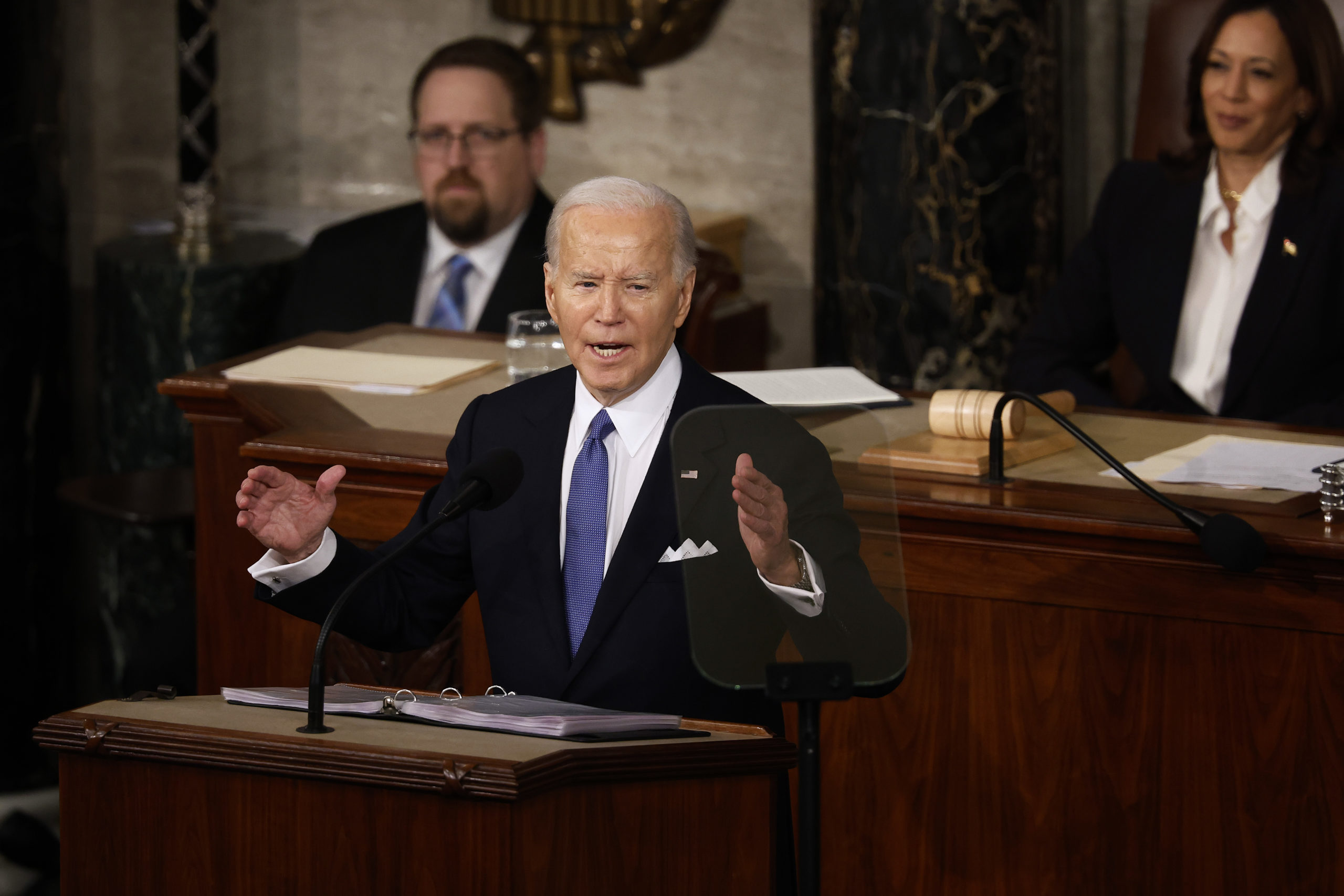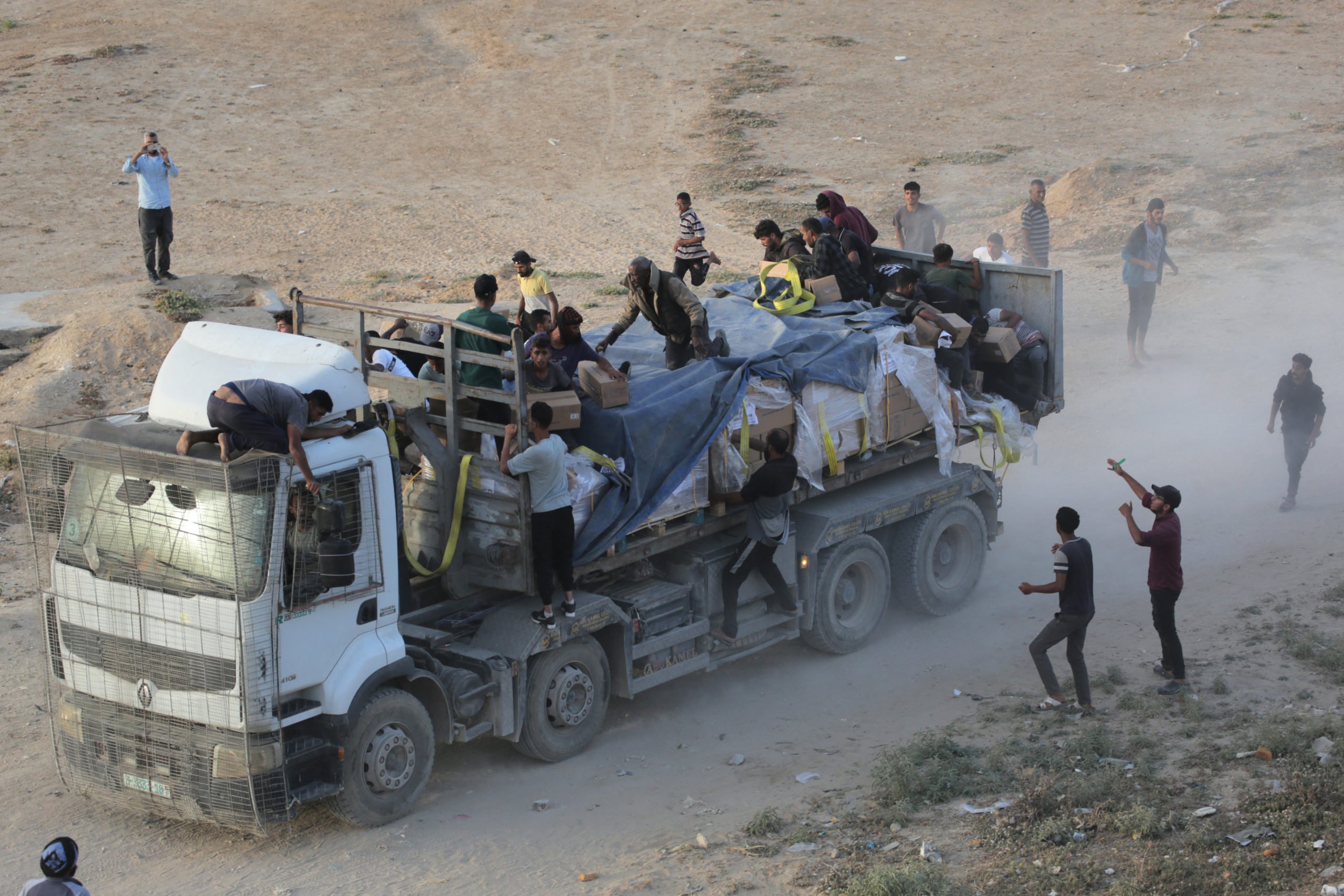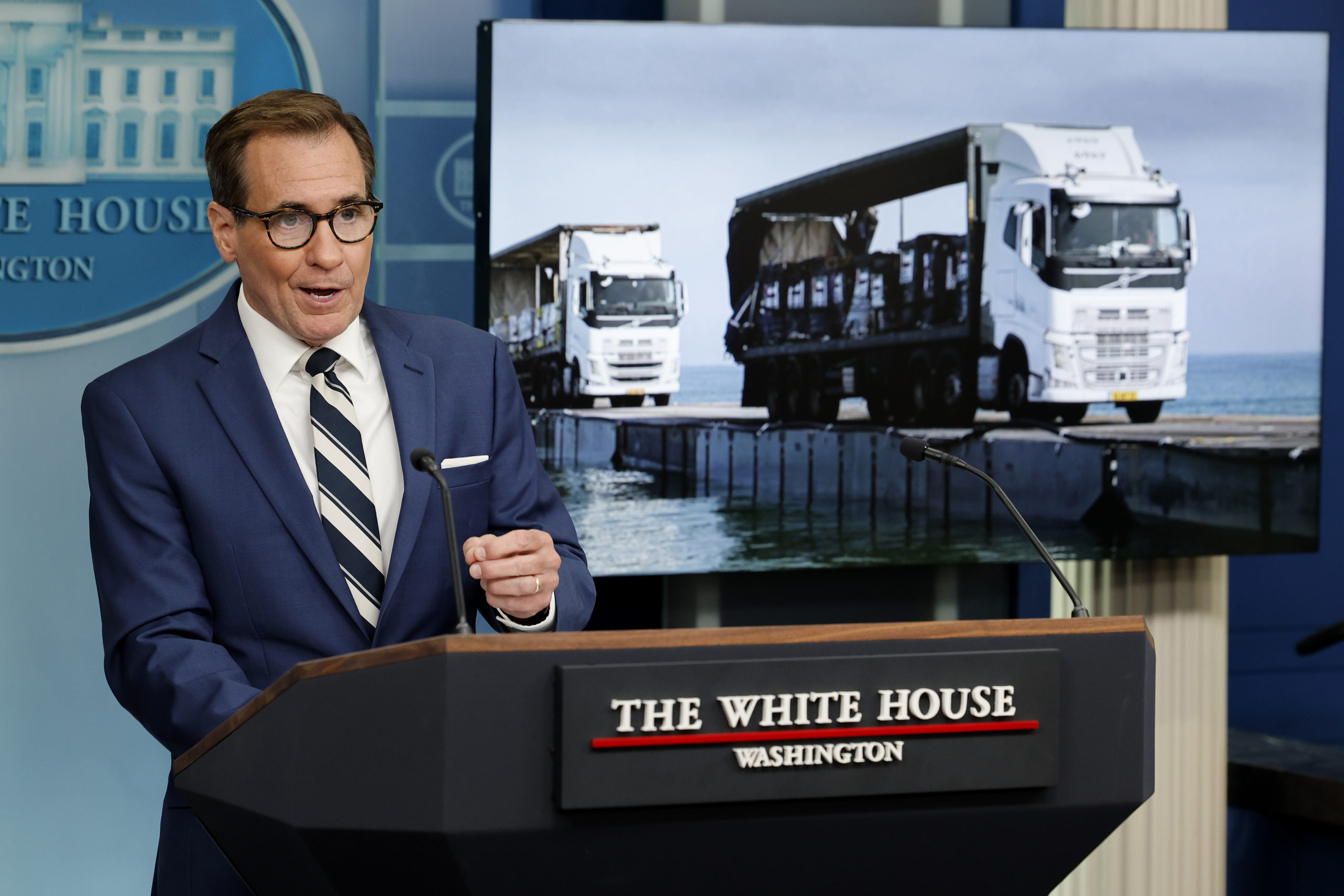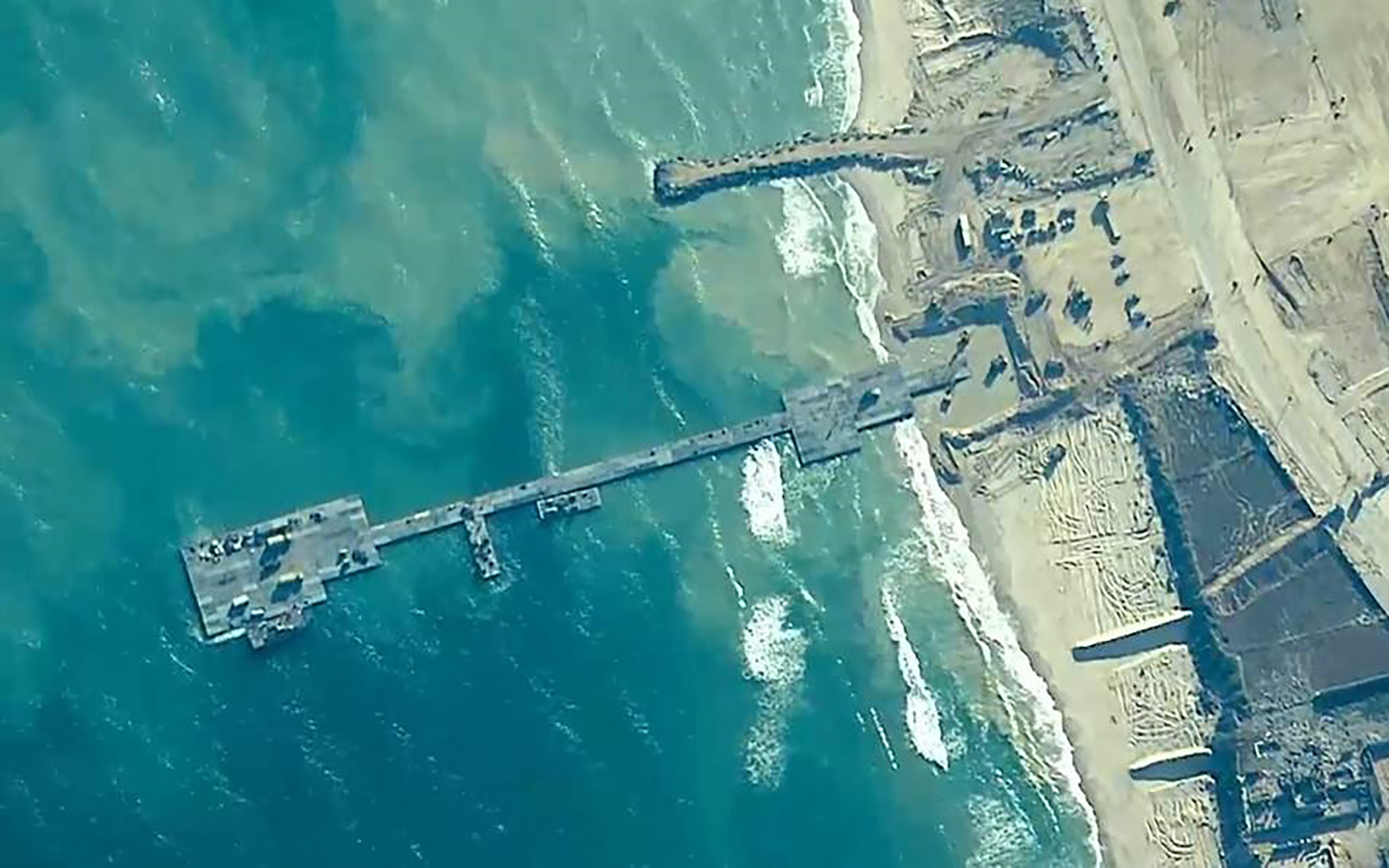‘Going To End Badly’: How Biden’s Signature Plan For Gaza Aid Turned Into A Costly Nightmare Jake Smith
President Joe Biden’s signature initiative to deliver aid to the Palestinians quickly fell apart and has turned into an operational nightmare, creating the possibility that the project could be scrapped far earlier than expected.
During his State of the Union address in March, Biden said he was going to direct the U.S. military to build a floating pier system for aid delivery to Gaza via the Mediterranean Sea, promising it would “enable a massive increase in the amount of humanitarian assistance” to the Palestinians. But since it became operational in May, a series of operational and logistical problems have plagued the pier, endangered U.S. troops and hampered efforts to get aid into Gaza.
Moreover, the pier was never built to withstand the rough conditions of the Mediterranean waters, dooming the project from the outset, according to officials and aid workers who spoke to The Wall Street Journal. So troubled is the pier that U.S. officials are privately warning aid organizations in Gaza that the Biden administration will pull the plug on the operation entirely in the coming weeks, much sooner than the anticipated target of September, The New York Times reported Tuesday.
“With [the Biden administration], the game is that they can’t shoot straight. They continue to have a ‘ready, fire and then aim’ approach to this kind of stuff,” Justin Logan, director of defense and foreign policy studies at the Cato Institute, told the DCNF. “There’s a lack of strategic coherence to basically everything the Biden administration is doing in the Middle East these days.”
Biden told the Pentagon about his idea for the pier only days before publicly announcing it at the State of the Union in March, reportedly leaving defense officials scrambling to mobilize forces for the task, according to the WSJ. The U.S. military hastily began constructing the system — consisting of a floating pier off the coast of Gaza and a second causeway pier anchored to the enclave’s shores — in late April, and started facilitating aid delivery operations in mid-May.

WASHINGTON, DC – MARCH 07: WASHINGTON, DC – MARCH 07: U.S. President Joe Biden delivers the State of the Union address during a joint meeting of Congress in the House chamber at the U.S. Capitol on March 07, 2024 in Washington, DC. (Photo by Chip Somodevilla/Getty Images)
But the pier, with a $230 million price tag, cannot operate beyond a “sea state three” level, equating to moderate or short waves, according to the WSJ. The Mediterranean Sea is frequently at a sea state four, with higher waves and wind speeds.
A stint of bad weather and choppy waves broke the pier apart in late May and sent it floating in the Mediterranean less than two weeks after it became operational. Military forces had to tow the pier north for repairs, which were completed on
Operations resumed on June 8, but two days later were hamstrung after the World Food Program — the key organization distributing aid on the ground in Gaza — said they would not conduct deliveries from the pier, citing security concerns. A crowd of starving civilians previously raided trucks on May 20 — days after the pier was opened — almost immediately after the trucks picked up aid from the pier.
“There was no mechanism of how this aid would get from the pier to its intended recipients,” David Daoud, senior fellow on Middle Eastern affairs at the Foundation for Defense of Democracies, told the DCNF. “Humanitarian organizations may pick it up, but do they have the capacity to distribute it? To me, that wasn’t made clear.”

TOPSHOT – Palestinians rush trucks as they transport international humanitarian aid from the US-built Trident Pier near Nuseirat in the central Gaza Strip on May 18, 2024, amid the ongoing conflict between Israel and the militant group Hamas. (Photo by -/AFP via Getty Images)
The U.S. military was forced to close the pier again on June 15 due to more rough seas; it was reopened on June 20. In the month since it was constructed, the pier has only been operational for ten days as of June 18. (RELATED: KJP Fires Back At Netanyahu’s Protest, Appeal For Military Aid)
Defense officials are now reportedly privately warning aid organizations on the ground in Gaza that the pier will be permanently closed sometime in the coming weeks, despite the Biden administration’s initial hopes that it would last through September, according to the Times. A Pentagon official told the DCNF that the pier was never meant to be permanent, but an exact date for closure hasn’t been established.
“We’ve always said that the [pier system] is a temporary and additive means to get aid to the people of Gaza, but that said, there has not been any direction to wrap the mission up or schedule a date of mission completion,” the official said.
In addition to the operational problems facing the pier, Defense Secretary Lloyd Austin admitted in late April that there is also a baseline risk that the terrorist group Hamas will fire on U.S. troops working on the floating pier, which is located only two miles off Gaza’s coast. “Various terrorist groups” fired mortars at the site for the causeway pier on April 24, just weeks before it was constructed by the U.S. military.

WASHINGTON, DC – MAY 17: White House National Security Communications Advisor John Kirby speaks to reporters during the daily news conference in the Brady Press Briefing Room at the White House on May 17, 2024 in Washington, DC. Kirby updated reporters about the humanitarian aid being delivered to the Gaza Strip using a floating platform and pier built by the United States military. (Photo by Chip Somodevilla/Getty Images)
“It was never a sound plan to begin with… whether it’s accidents, or logistical hurdles, or risk to our troops — and all these problems that have come to fruition,” Michael DiMino, a senior fellow at Defense Priorities and former CIA official, previously told the DCNF, pointing to alternative, more effective methods of delivering aid to Gaza. “I don’t think there should be any effort to try to continue this.”
The pier faces another problem — even if fully operational, it can only deliver a fraction of the aid needed for the Palestinian population in Gaza. The Pentagon said in late May that it was aiming for between 90 and 150 truckloads worth of aid to be delivered from the pier on a daily basis, but humanitarian organizations have reportedly said that only about seven truckloads of aid are coming off the pier each day, according to the Times. (RELATED: Biden Cuts Off His Own Supporters So Anti-Israel Protesters Can Shout Over Him)
A United Nations (UN) spokesperson previously told the DCNF in May that between 300 and 500 truckloads of aid are needed in Gaza daily.
“Supplies from the pier aren’t flowing to Palestinians, and never really have,” Stephen Semler, a national security expert at the Quincy Institute for Responsible Statecraft, wrote in an essay on June 12.

UNSPECIFIED – MAY 16: (EDITOR’S NOTE: This Handout image was provided by a third-party organization and may not adhere to Getty Images’ editorial policy.) U.S. Army Soldiers assigned to the 7th Transportation Brigade (Expeditionary), U.S. Navy Sailors assigned to Amphibious Construction Battalion 1, and Israel Defense Forces emplace the Trident Pier, May 16, 2024 on the Gaza coast. (Photo by U.S. Central Command via Getty Images)
Pentagon Press Secretary Maj. Gen. Pat Ryder told reporters on Thursday that aid delivery operations from the pier had resumed. But the aid isn’t being distributed — the World Food Program is still halting deliveries from the pier over security concerns on the ground in Gaza.
Total aid delivery into Gaza, including shipments via truck convoys through border crossings and airdrops, actually dropped after the pier was established, according to an analysis from Responsible Statecraft last week. Over 93,000 pallets of aid were delivered to Gaza in April, down to roughly 29,000 in May.
Of the 29,000 pallets of aid in May, deliveries from the pier accounted for less than 2,000 pallets, according to Responsible Statecraft.
“I don’t believe that this wasn’t foreseeable,” Daoud told the DCNF about the pier’s problems, shortcomings and failures to effectively get aid into Gaza. “My knee-jerk feeling when I heard this thing announced was that it was going to end badly.”
Comments are closed.
